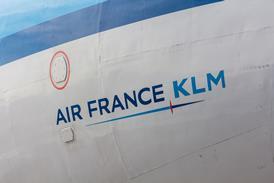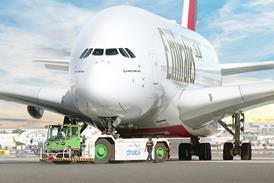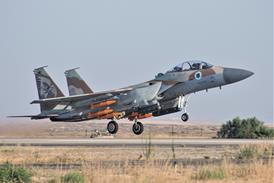Infrared search and track sensor will enhance F/A-18E/F's targeting capabilities
The US Navy plans to expand the air-to-air capability of the Boeing F/A-18E/F Super Hornet with new sensors and missiles, even as it enhances the carrier-borne fighter's air-to-ground effectiveness through sensor integration, networking and new weapons.
A competition is getting under way for an infrared search and track (IRST) sensor to provide a passive, long-range air-to-air adjunct to the Block 2 Super Hornet's Raytheon APG-79 active electronically scanned array radar. "The Hornet has never had a radar that could out-detect its weapons. With the AESA it has, and the IRST will provide multi-spectral targeting," says F/A-18 programme manager Capt Donald Gaddis.
To be carried on the aircraft's centreline station, the long-wavelength IRST will complement the short-range air-to-air capability of the Raytheon ATFLIR targeting pod, which uses a mid-wave infrared sensor. The navy plans to buy 150 IRST pods, with the system to become operational in 2012-13.
Improved air-to-air weapons will also be available by that time: the short-range infrared-guided AIM-9X Sidewinder Block 2 and medium-range radar-guided AIM-120D AMRAAM, both under development by Raytheon. The Block 2 AIM-9X introduces the AMRAAM datalink and an advanced fuze, which is expected to extend the missile's range in lock-on after launch mode.
Deliveries are to begin in 2010 and will follow the AIM-120D, which has extended range, enhanced two-way datalink and expanded high off-boresight engagement capability.
The USN is also enhancing the Super Hornet's self-defence capability by integrating the AESA with the aircraft's Raytheon ALR-67(V)3 radar warning receiver, says Gaddis. Initially this will allow the digital RWR to be cued to targets detected by the radar, increasing its sensitivity, but ultimately the AESA will be able to jam fire-control radars and missile seekers within its X-band frequency range.
One self-defence issue the navy still has to overcome is with the BAE Systems ALE-55 fibre-optic towed decoy. Gaddis says testing has been stopped because, in certain flight regimes, the decoy can hit the bottom of the fuselage during deployment. A fix is being engineered, he says, and meanwhile the F/A-18E/F is operational with the less-capable Raytheon ALE-50 towed decoy.
Source: Flight International























